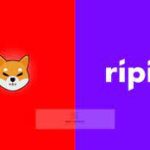QUIC Protocol Will Be Implemented on the Solana Network To Eradicate Performance Declination

In the last 10 months, Solana has suffered performance declination on three different occasions; which range from how Solana went down for nearly 17 hours the last September due to the overwhelming traffic emanation from DeFi token launch, to the same downtime that happen recently in April that took 7 good hours and the most recent one in June 1st that claimed hours.
The problem was traced to the performance bugs in the blockchain, specifically in the transaction processing unit (TPU). During those times when the system was down, the number of transactions processed per second dropped from thousands to just tens.
Read Also: Dogecoin Welcomes Community Feedback On The preview Of The New Dogecoin website.
Because of this, Solana developers came together to think of how to eradicate the issue and they came up with replacing the UDP with Google’s QUIC protocol in the new update that came after they have attempted to normalize the operations around the platform’s existing user datagram protocol (UDP).
What is QUIC?
QUIC (Quick UDP Internet Connections) is a new transport protocol for the internet, developed by Google. QUIC solves several transport-layer and application-layer problems experienced by modern web applications while requiring little or no change from application writers. QUIC is very similar to TCP+TLS+HTTP/2 but implemented on top of UDP. Having QUIC as a self-contained userspace protocol allows innovations that aren’t possible with existing protocols as they are hampered by legacy clients and middleboxes.
Advantage of QUIC
- Connection establishment latency
- Multiplexing without head-of-line blocking
- Forward error correction
- Correction migration
- Improved congestion
How can I ensure QUIC traffic flows correctly on my network?
As a network operator, there are a few things to consider:
- UDP unicast traffic should be allowed to flow unimpeded by filters or rate-limiters.
- Hash functions used for link aggregation or traffic balancing should include UDP transport headers to ensure sufficient entropy.
- NATs should be configured for UDP unicast traffic according to documented best practices, e.g., RFC 4787.
How does the QUIC aid Solana Network
- Solana hopes that the QUIC will put an end to bots from spamming transactions and clogging up the network by slowing them down at their source, hence reducing their effect.
- The upgrades will also introduce a new-look fee prioritization model, which Solana will mitigate the effect of famous applications and services.
As revealed in the tweet by the co-founder of Solana, Anatoly Yakovenko on Wednesday, explaining how the new features, particularly the fee prioritization will work after the network upgrades.
Also in the tweet, Yakovenko likened the new system to a Light Switch that everyone wanted to flip at the same time but which only be flipped by the highest border. in another word, the users with the highest paying gas fee will have their transaction pushed to the front of the queue.
The co-founder explained the prioritization will not cause a fee increase for the Solana users. he promised that the Solana model won’t uniformly saddle users with increased gas fees across the entire network. But the increased gas fee will only prioritize the transaction-specific applications and services. So, the fees for one application are not likely to affect the rest of the Solana network.
Read Also: NFBarter: A Multi Chain Trade & Swap NFT protocol on Ethereum & Solana Chain
More also, on Solana, network validators will also be able to include a certain number of transactions for a particular account in each block and mark them as prioritized if extra fees are paid. More to the QUIC, the system will consider the number of Solana held or stake by any node running the Solana client on the platform. For now, the additional fee for demand-driven is unknown.
Edgevana adds support to Solana
Recently, Edgevana, a startup promising scalable capacity in Edge locations that aims to be a leader in Blockchain Infrastructure and Ecosystem Services has added support to Solana, a web3 blockchain firm.

Cryptolifedigital is a cryptocurrency blogger and analyst known for providing insightful analysis and commentary on the ever-changing digital currency landscape. With a keen eye for market trends and a deep understanding of blockchain technology, Cryptolifedigital helps readers navigate the complexities of the crypto world, making informed investment decisions. Whether you’re a seasoned investor or just starting out, Cryptolifedigital’s analysis offers valuable insights into the world of cryptocurrency.





